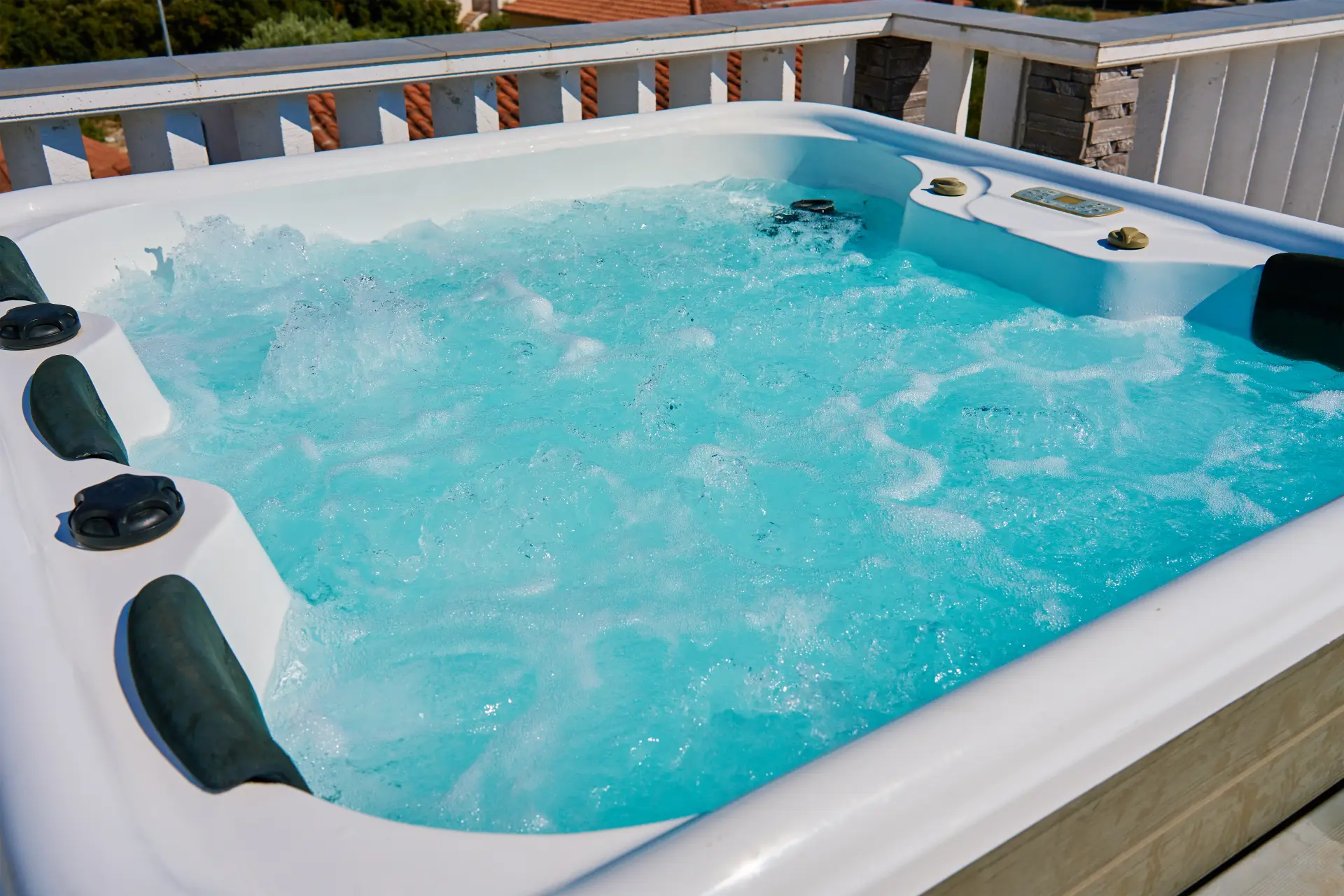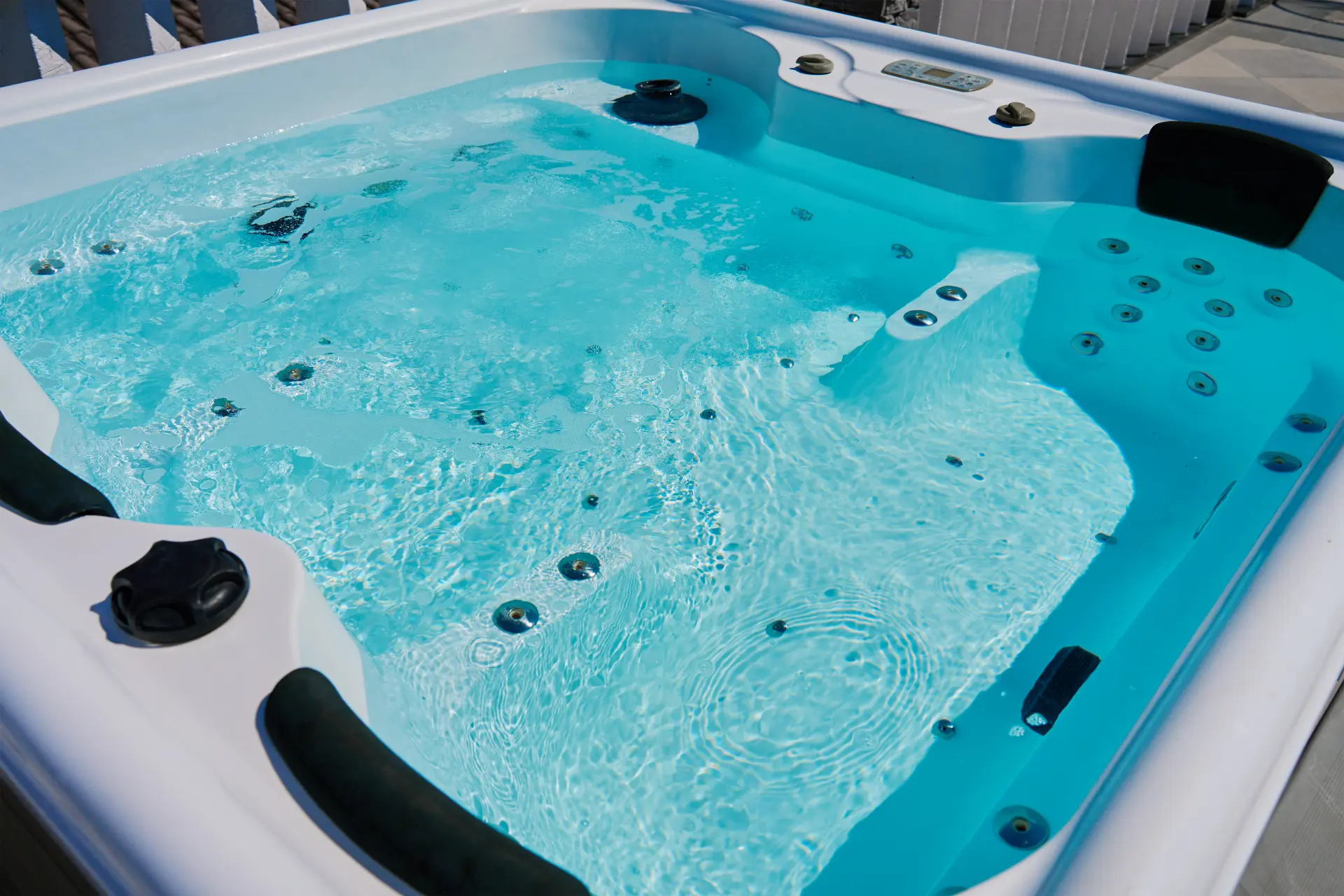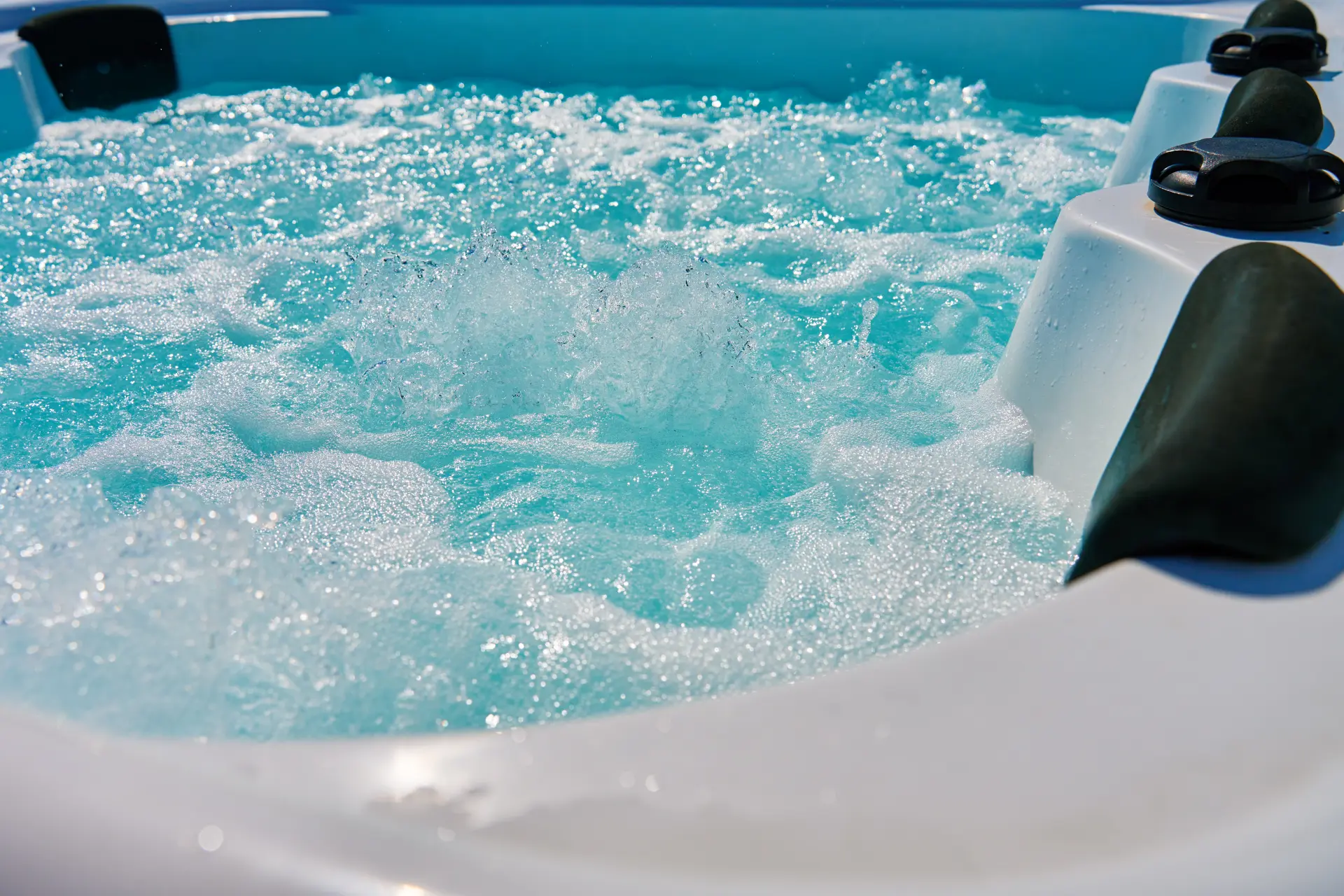Avoid the common hot tub winterisation mistakes with our expert tips. Ensure your hot tub is fully dried and cleaned to prevent damage during winter with our guide.
Draining but Not Fully Drying
One of the most common mistakes homeowners make when winterising their hot tubs is draining the water but not fully drying the tub and its internal components afterwards. While draining removes the bulk of the water from the tub, it doesn't completely clear out the small amounts of water that remain in the shell, plumbing lines, pumps and jets.
When residual water is left in the tub, it can freeze and expand once the temperature drops low enough. This expansion puts pressure on the pipes, seals, and fittings, which can lead to issues like cracks, leaks or broken components.
Beyond structural damage, failing to fully dry the tub also creates the risk of bacteria, mould or odours forming inside the tub. Any water that's left in hidden corners or filters during the winter can stagnate, which can cause the hot tub to become unsanitary.
To avoid these problems, it's crucial to use a wet-dry vacuum to remove small drops of water from the jets and plumbing lines. Wiping down the shell thoroughly and ensuring the filters are removed, cleaned, and dried can also help eliminate any hidden water.
Leaving Water in the Filter or Pump
Another one of the biggest mistakes homeowners make when winterising their hot tubs is leaving water inside the filter or pump. While draining the tub removes most of the water, these components can still retain some. The pump is one of the most important and expensive parts of a hot tub, and if water remains inside it and the temperature drops, the water can freeze and put pressure on the internal components. This can cause cracks, broken seals and damage to the pump.

Similarly, the filters can also retain water within their pleats and housing. If these components are left wet, the trapped water can freeze and cause the filter casing to split or warp, meaning it won’t work properly when the hot tub is reopened.
Even if freeze-related damage doesn’t occur, leaving water in the filter or pump creates the perfect environment for bacteria, mould and odours to develop during the winter.
To avoid these problems, it’s essential to remove and clean the filters thoroughly and let them dry completely before you store them indoors over the winter.
Many homeowners choose to replace their filters at this stage to ensure their hot tub runs at peak performance when it's reopened. For the pump, using a wet-dry vacuum to push out any trapped water is highly effective.
Skipping a Thorough Cleaning Before Shutdown
While draining and covering the tub are essential steps, failing to properly clean your hot tub beforehand can lead to a range of issues during the winter, which can make reopening the tub during spring far more difficult.
Over time, hot tubs accumulate oils, lotions, dirt and other residues that cling to the shell, jets and filters. If these contaminants are left behind when the tub is shut down, they can harden or stain the tub during the inactivity period. In addition, bacteria and biofilm can form in the plumbing and shell, which can create hygiene issues and unpleasant odours.
Thoroughly cleaning your hot tub before winterisation also gives you the opportunity to inspect the tub for wear and tear. By wiping down the shell, scrubbing the jets, and flushing out the plumbing with a special cleaner, you can spot small cracks, seal issues or signs of damage. Addressing these problems before shutting down your hot tub can save you time and money later on.
Waiting Until Temperatures Drop Too Low
Water expands when it freezes, and if the hot tub hasn't been drained or fully winterised, water that's trapped in the pipes, pump or jets can freeze and cause cracks and leaks. Once this type of damage occurs, it's often expensive to repair. By waiting until the weather turns cold, homeowners leave their hot tubs vulnerable to damage that could have been avoided by preparing their tub earlier.

Another drawback of delaying winterisation is the difficulty of carrying out the process in freezing conditions. Draining the tub, cleaning the shell, and clearing out water from the pipes is much harder to do when the temperature is near or below zero.
Your hose can freeze, the water may not drain properly, and working outdoors in icy conditions is uncomfortable and unsafe. Winterising your hot tub during milder weather makes the process easier, safer and more effective.
Additionally, waiting too long to winterise your hot tub means that you miss the opportunity to thoroughly clean and inspect your tub before it's shut down. When winterisation is rushed, important steps like balancing the water, scrubbing the shell or removing and drying the filters can be overlooked.
Skipping these steps increases the risk of bacteria growing, staining and making your hot tub unsanitary.
The Hot Tub Engineer provides professional hot tub cleaning and maintenance services that are designed to keep your spa in perfect condition all year round. From deep cleaning and water balancing to filter maintenance and full system inspections, we make sure your hot tub is safe, hygienic and ready to use.


